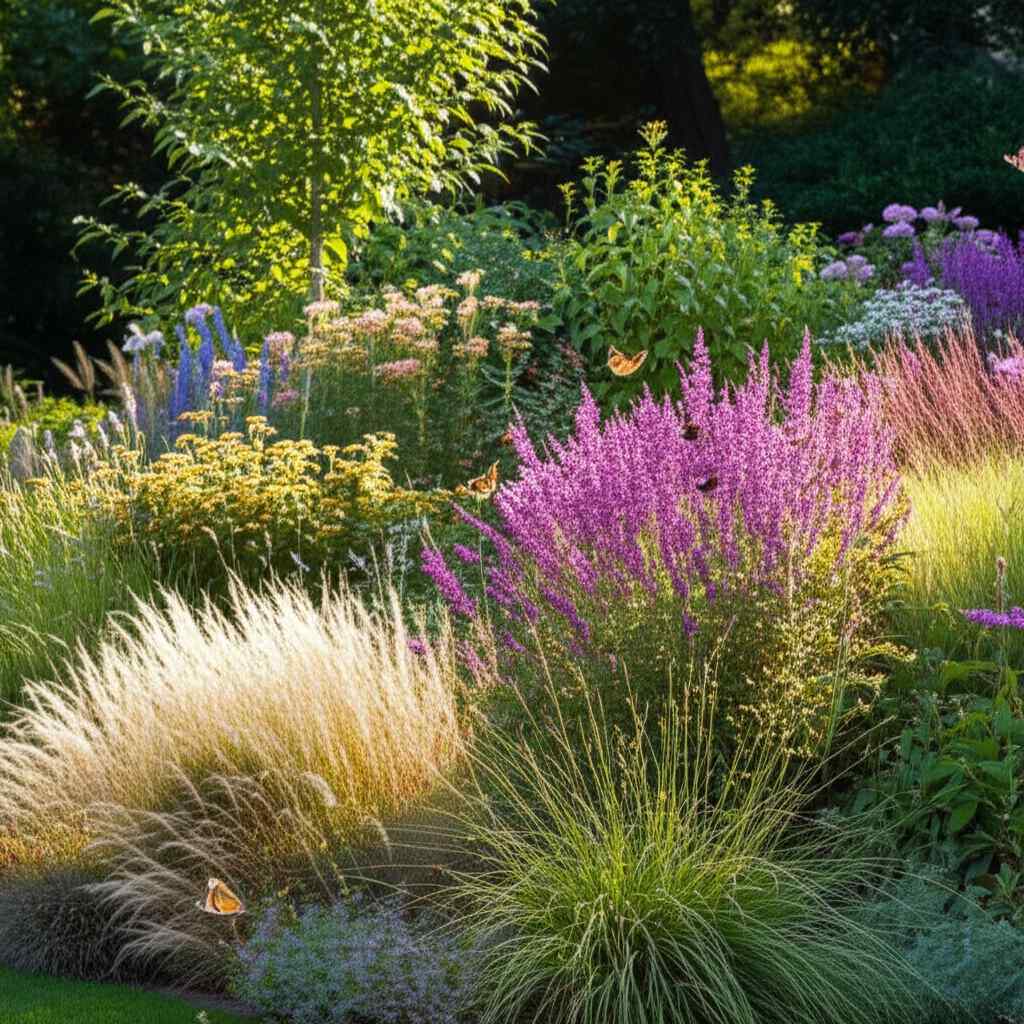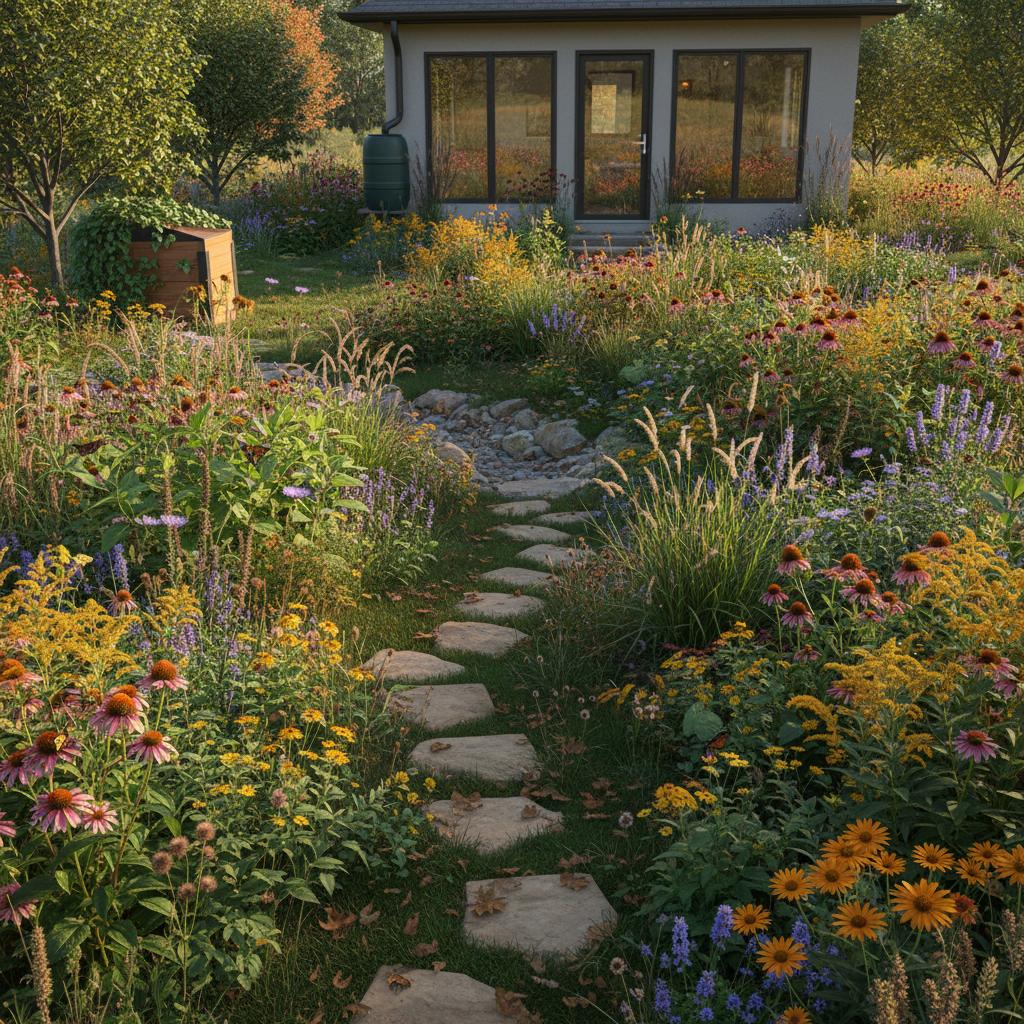Native Plants for a Thriving Wildlife Habitat
Feeling overwhelmed by endless lawn maintenance or longing for a yard buzzing with life? Many homeowners share this desire for a vibrant, low-maintenance landscape. Backyard rewilding with native plants offers a practical solution, fostering self-sustaining habitats that support wildlife, store carbon, and conserve water. This guide, brought to you by Dickinson's Garden Center, provides actionable steps to transform your yard into a biodiversity haven.
Why Rewilding Matters for Your Yard
Backyard rewilding is a direct way to restore ecosystems right at home. By prioritizing native plants, layered designs, and healthy soil, you create habitats that endure with minimal upkeep. With pollinator declines, rising temperatures, and increasing stormwater challenges, even a small biodiversity garden bolsters local wildlife and strengthens neighborhood resilience. Dickinson's Garden Center has noted growing demand for native plants, rain garden materials, and pollinator kits, reflecting a shared commitment to sustainable landscapes.
Step 1: Observe Your Space
Start by spending a couple of afternoons assessing your yard. Map out areas of full sun, partial shade, and full shade, and identify spots where water collects after rain or where soil feels compacted. Listen for birds and watch for insects like bees or butterflies to understand existing wildlife activity. This simple evaluation ensures you select plants suited to your conditions, reducing future maintenance.
Step 2: Select Native Plants for Your Region
Choose native species that align with your yard's light, soil, and moisture levels. In the Mid-Atlantic, for instance, white oak and tulip poplar serve as sturdy canopy trees, while spicebush and clethra work well as mid-story shrubs. For pollinators, opt for long-blooming perennials like black-eyed Susan, coneflower, and New England aster, alongside grasses such as little bluestem for soil stability and bird seed. Dickinson's Native Plant Finder tool helps narrow options based on your specific site needs.
Step 3: Design with Purpose
A balanced wild landscape combines beauty with function. Integrate structural features to support wildlife and manage water effectively:
- Rain gardens or bioswales: Place these in low areas to capture runoff from roofs or driveways, planting with moisture-tolerant natives to filter water.
- Dead wood zones: Stack logs or designate a 'leave-it' corner for beetles, salamanders, and ground-nesting bees.
- Rock piles or stone walls: These provide crevices for reptiles and overwintering insects.
- Bird and bat boxes: Install at varied heights, tailored to specific species' preferences.
- Pollinator hotels: Use bamboo tubes or hollow reeds, positioned in sunny, sheltered spots.
Step 4: Follow a Practical Timeline
Break your rewilding project into manageable phases to maintain momentum:
- Week 1: Assess your site and draft a basic layout.
- Week 2: Order native plants, seed mixes, and soil amendments suited to your area.
- Week 3: Remove invasive species manually or with targeted treatments.
- Week 4: Add 2 to 3 inches of compost and adjust soil pH if needed.
- Weeks 5-6: Build structural elements like rain gardens or log piles.
- Weeks 7-8: Plant trees and shrubs, watering deeply to establish roots.
- Weeks 9-10: Add perennials, grasses, and seed mixes in open spaces.
- Week 11 onward: Apply shredded bark mulch and install wildlife shelters.
Step 5: Prioritize Soil and Water Health
Support new plants with smart water practices. Use drip irrigation with moisture sensors to avoid waste, and install rain barrels to capture roof runoff for gravity-fed watering. Enhance soil vitality by applying compost tea in the first season and using mycorrhizal inoculants during planting to boost root health. Mimic natural forest floors by layering shredded leaves and wood chips, avoiding tillage in planted areas.
Step 6: Manage Pests Naturally
Focus on ecological balance rather than chemical controls. Plant insectary species like yarrow or native goldenrod to draw beneficial predators such as lady beetles. Use physical barriers, like copper tape around beds, to deter slugs. If pests persist, apply targeted solutions like neem oil only to affected areas.
Step 7: Involve Your Community
Rewilding can unite families and neighbors. Create a kid-friendly corner with a shallow wetland for observing tadpoles, and maintain a shared journal for tracking blooms and wildlife. Organize a local seed swap to boost plant diversity and foster connected biodiversity gardens. These efforts build support and amplify impact.
Step 8: Measure Your Impact
Track progress to stay motivated. Photograph pollinators and upload sightings to platforms like iNaturalist, monitor bird activity with checklists or cameras, and test soil organic matter through local extension services. Aim for higher native plant survival rates, increased wildlife counts, and improved water retention over the first two seasons.
Start Small, See Big Results
Rewilding is a journey of small, consistent actions. Begin with one corner of your yard this season, using Dickinson's region-specific plant lists, organic mulches, and rain barrel kits for support. Over time, your space will host more birds and pollinators, store carbon in healthier soil, and demand less effort. Transform your backyard into a vital piece of local ecosystem restoration with just a few steps today.



